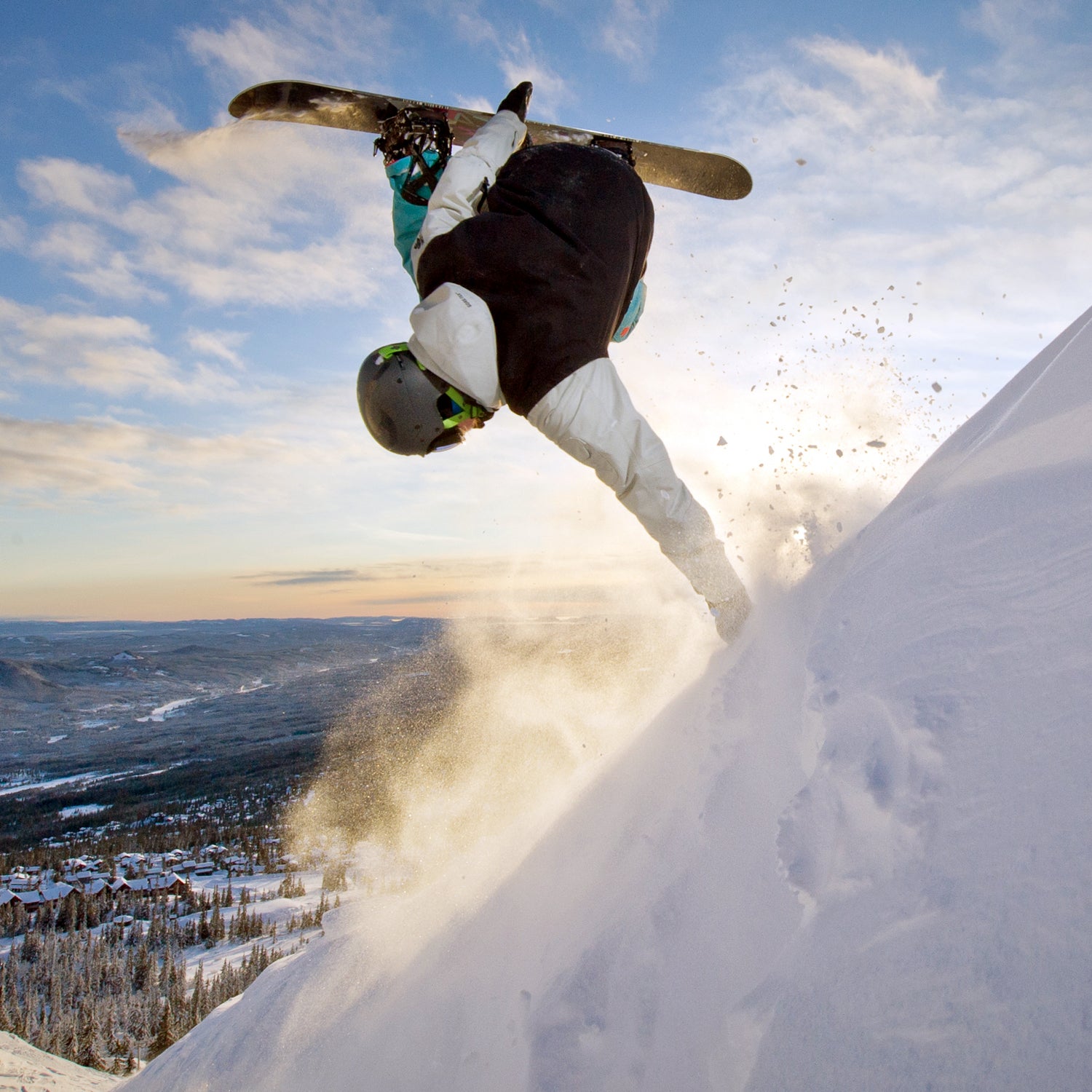You and your buddy should probably buy each other a Shotzski and call it even, because the most accurate answer to your question is a big fat, “It all depends.”
According to the non-profit trade association Snowsports Industries America, alpine skiing burns approximately 500 calories an hour while snowboarding lags slightly behind at 450. Neither stat includes time spent on the lift. But those numbers are just estimates—there are no published comparison studies—and the experts we spoke with say that in reality, it's likely more of a toss up.
“Your skill level, the difficulty of the slope, and your technique are all going to affect the muscle groups you're working and how many calories you're burning,” says Kevin Jordan, a ski and snowboard instructor at Aspen Snowmass in Colorado and ambassador for Learn to Ski and Snowboard Month. (That's January, by the way!)
“If you're experienced enough, you can ski or snowboard pretty much straight down a hill without much effort, and you're really just engaging those muscles you need for balance,” he says. “But you can also put a lot of work into turns and jumps and technique—it's really up to the individual person.”
The Compendium of Physical Activities—a database that measures the energy expenditure of sports and activities—bills the two snowsports as equal when it comes to calorie burn. Downhill skiing and snowboarding both receive metabolic equivalent (MET) ratings of 4.3 for “light effort” and 5.3 for “moderate effort,” which means that a 150-pound person would burn between 293 and 361 calories an hour doing either.
The MET rating for “vigorous” downhill skiing effort is 8.0, which translates to a 545-calorie-per-hour burn—but, as of its last update in 2011, the Compendium does not list a comparable “vigorous” snowboarding counterpart.
When it comes to beginners, Jordan says, skiers generally catch on easier and fall less, so they expend less energy getting up over and over again. In fact, snowboarders of all levels spend more time on the ground than skiers because they've got to sit down to strap in before each run, so they generally get more of an upper-body workout. “You're essentially doing a pushup at least once every run,” says Jordan, “which you don't get as often with skiing.”
The Compendium of Physical Activities—a database that measures the energy expenditure of sports and activities—bills the two snowsports as equals when it comes to calorie burn.
Snowboarders may get more or less of a workout than skiers on the flat areas between runs, depending on whether they unstrap completely or skate along with one foot on their boards. Skiers tend to propel themselves along flat terrain or uphill with their poles, getting a bit of that upper-body workout, and working their core and legs with a cross-country motion.
“Just getting from the bottom of the hill back up to the lift can be the most exhausting part,” says Jordan. “One of the biggest complaints from new skiers is that they don't expect to do so much hiking around the beginner area with skis strapped to their feet.” Snowboarders are more likely to unstrap and carry their boards, he says.
Competitive skier and snowboarder Thom Canalichio says he's equally spent after a long day doing either sport, but that he feels their effects on different muscles. “I find the side-to-side action of skiing leads to the most aches and pains in the glutes and the outer muscles of the hips, from all that piston-like action of the legs and the push required to turn from edge to edge,” he says.
“The front-to-back action and balance required in snowboarding, on the other hand, tends to really hit the front of my quads and the calves, as well as the deeper muscles of the lower abdomen, such as the psoas,” adds Canalichio, who skis at Wintergreen Resort in Virginia and competes in amateur races throughout the northeast. “Few things help maintain a flat, toned stomach like snowboarding, while skiing seems to result in a firm, strong butt and thighs.”
Anyone looking to snowsports for fitness should consider taking up both skiing and snowboarding, says Canalichio. “Learning one undoubtedly makes you better at the other, and different days, weather, and snow conditions may be more enjoyable on one versus the other.”
Both sports can be highly aerobic, especially at advanced levels, so cardiovascular conditioning is important. Canalichio says high-intensity interval drills consisting of jump squats, jumping lunges, burpees, and box jumps have helped him build explosive strength in his quads and glutes. “It simulates the kind of short-burst activity of skiing and snowboarding,” he says, “and it's crucial for those fast-twitch muscles needed for quick turns at high speeds.”
Jordan agrees, and says that training for either activity should also involve squats with weights, core work, stability exercises with a Bosu ball, and ankle- and calf-strengtheners. “You won't tire as quickly, and you won't feel as sore the next day, if you've been working those muscles in the gym,” he says.
The bottom line: Skiing and snowboarding can both burn between 300 and 600 calories an hour, but how much exactly depends on how hard you work. Of course, there's one sure-fire way to know that you're getting the best workout possible: Skip the lift and skin your way to the top.

